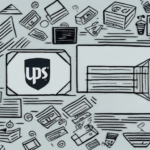Automating Your Shipping Process with UPS Standard Flat Rate Shipping
As an online business owner, managing your shipping process can be time-consuming and daunting. However, utilizing UPS Standard Flat Rate Shipping provides an efficient solution to greatly streamline your shipping operations. Automating this process not only saves time but also reduces errors, allowing you to offer a better customer experience. This comprehensive guide explores how to automate your shipping process with UPS Standard Flat Rate Shipping, incorporating the latest strategies and insights to ensure your business remains competitive.
The Benefits of Using UPS Standard Flat Rate Shipping for Your Business
UPS Standard Flat Rate Shipping is an ideal option for businesses looking to simplify their shipping processes. Key benefits include:
- Cost Predictability: With a fixed-rate pricing structure, businesses can anticipate shipping costs without worrying about variables like weight or destination. This is particularly advantageous for small and medium-sized enterprises.
- Simplicity: The standardized rates and packaging options simplify the shipping process, reducing the need for complex calculations.
- Versatility: Suitable for items of various sizes and weights, making it flexible for businesses with diverse product offerings.
- Cost Savings: Utilizing free packaging from UPS can lead to significant savings on shipping expenses.
Moreover, UPS Standard Flat Rate Shipping offers reliable delivery times and comprehensive tracking options. According to a 2023 UPS report, businesses using flat rate shipping experienced a 15% reduction in shipping-related errors and a 20% improvement in on-time deliveries. Reliable customer service and support further enhance the shipping experience, enabling businesses to resolve issues swiftly and maintain customer satisfaction.
How to Set Up UPS Standard Flat Rate Shipping for Your Online Store
Setting up UPS Standard Flat Rate Shipping for your online store is straightforward:
- Create a UPS Account: Sign up for a UPS account if you haven't already. Visit the UPS website to register.
- Access Shipping Options: Log in to your UPS account and navigate to the shipping options page.
- Select Standard Flat Rate Shipping: Choose UPS Standard Flat Rate Shipping as your preferred shipping method.
- Customize Shipping Settings: Configure your shipping settings, including selecting appropriate packaging sizes that align with your product dimensions.
- Obtain UPS Account Number: Ensure you have a UPS account number, as it is required to utilize this shipping service.
After setting up, it's essential to conduct a test run by placing a test order on your online store and selecting UPS Standard Flat Rate Shipping during checkout. This helps verify the accuracy of shipping rates and ensures the system functions correctly.
Additionally, be mindful of UPS’s weight and size restrictions for packages. If your products exceed these limits, consider alternative shipping options or adjust your pricing to accommodate potential increased shipping costs.
Understanding the Cost Savings of UPS Standard Flat Rate Shipping
UPS Standard Flat Rate Shipping offers significant cost savings for businesses through:
- Fixed-Rate Pricing: Predictable costs enable better budgeting and financial planning, eliminating surprises due to variable shipping rates.
- Free Packaging: Utilizing UPS-provided packaging reduces material costs and contributes to overall savings.
- Simplified Shipping Process: Streamlined operations decrease administrative overhead and minimize the risk of costly errors.
Furthermore, a study by Forbes indicates that businesses implementing flat rate shipping experienced up to a 25% reduction in shipping costs over traditional variable-rate models. Automation features, such as online label printing and scheduled pickups, enhance efficiency, allowing businesses to allocate resources more effectively.
In addition to financial benefits, UPS's commitment to sustainable practices means that using their flat rate shipping can also reduce your business’s carbon footprint, aligning with eco-friendly initiatives and appealing to environmentally conscious consumers.
Leveraging Automation to Streamline Your Shipping Process with UPS Standard Flat Rate Shipping
One of the most significant advantages of UPS Standard Flat Rate Shipping is the potential to automate your shipping process. By integrating with an e-commerce platform or shipping software, businesses can automate key tasks such as:
- Importing orders directly from your online store.
- Creating and printing shipping labels automatically.
- Tracking packages in real-time without manual input.
Automation not only saves time but also reduces the likelihood of human errors, ensuring that shipping operations run smoothly. According to a Shopify report, businesses that implemented shipping automation saw a 30% increase in operational efficiency.
Moreover, automating your shipping process allows for better management and analysis of shipping data. Insights into shipping costs, delivery times, and customer satisfaction can inform strategic decisions, such as optimizing shipping routes or selecting the most cost-effective shipping options.
Tips and Tricks for Using UPS Standard Flat Rate Shipping to Improve Customer Satisfaction
Enhancing customer satisfaction through UPS Standard Flat Rate Shipping can be achieved by:
- Timely Tracking: Provide customers with real-time tracking information, allowing them to monitor their shipments and reducing anxiety related to delivery times.
- Secure Packaging: Utilize appropriate UPS packaging to protect fragile items, minimizing the risk of damage during transit.
- Expedited Shipping Options: Offer expedited shipping as an option for customers requiring faster delivery, adding flexibility to their purchasing experience.
- Clear Communication: Transparently communicate shipping policies, estimated delivery times, and any potential restrictions to build trust and manage expectations.
Implementing these strategies not only improves the customer experience but also fosters loyalty and encourages repeat business. According to a Bain & Company study, businesses that prioritize shipping satisfaction see a 25% increase in customer retention rates.
The Key Features of UPS Standard Flat Rate Shipping and How They Benefit Your Business
UPS Standard Flat Rate Shipping boasts several key features that provide substantial benefits to businesses:
- Fixed-Rate Pricing: Simplifies budgeting and financial planning by offering predictable shipping costs.
- Free Packaging: Reduces material costs and ensures consistent packaging standards.
- Automation Integration: Seamlessly integrates with shipping software and e-commerce platforms, enhancing operational efficiency.
- Extensive Network: Access to a vast network of UPS locations ensures quick and reliable package delivery.
- Real-Time Tracking: Enables businesses and customers to monitor shipments, enhancing transparency and trust.
These features collectively contribute to a more efficient, cost-effective, and customer-friendly shipping process. By leveraging these advantages, businesses can enhance their competitive edge in the e-commerce landscape.
Customizing Your UPS Standard Flat Rate Shipping Options to Meet Your Business Needs
To maximize the benefits of UPS Standard Flat Rate Shipping, it's essential to tailor the shipping options to align with your specific business requirements. Consider the following customization strategies:
- Choose Appropriate Packaging: Select packaging sizes that best fit your products, minimizing unused space and reducing shipping costs.
- Adjust Shipping Schedules: Align shipping schedules with your business operations to ensure timely dispatch and delivery.
- Integrate Customer Preferences: Offer various shipping options to cater to different customer needs, such as same-day or next-day delivery.
- Set Shipping Rules: Define rules within your shipping software to automatically select the most cost-effective and efficient shipping method based on order details.
By customizing your shipping options, you can provide a more personalized experience that differentiates your business from competitors and meets the unique demands of your customer base.
How to Troubleshoot Common Issues with UPS Standard Flat Rate Shipping
Despite its efficiency, UPS Standard Flat Rate Shipping may present some challenges. Common issues include:
- Incorrect Package Tracking: Ensure that tracking numbers are correctly entered and that orders are processed promptly to avoid discrepancies.
- Delivery Delays: Monitor delivery schedules and communicate proactively with UPS during peak seasons or adverse weather conditions to mitigate delays.
- Shipping Label Errors: Double-check shipping labels for accuracy in addresses and package details to prevent misrouting.
To address these issues:
- Consult the UPS Support Center for troubleshooting guides and resources.
- Reach out to UPS customer service for personalized assistance and to resolve specific shipping concerns.
- Implement regular audits of your shipping process to identify and rectify recurring issues.
Proactive troubleshooting ensures a smooth shipping experience, maintaining customer trust and operational efficiency.
A Comprehensive Guide to Integrating Your Online Store with UPS Standard Flat Rate Shipping
Integrating your online store with UPS Standard Flat Rate Shipping enhances automation and improves the overall shipping experience. Follow these steps for seamless integration:
- Utilize UPS API: Leverage the UPS API to connect your e-commerce platform directly with UPS services, enabling real-time shipping calculations and label generation.
- Implement UPS WorldShip: Use UPS WorldShip for comprehensive shipping management, including batch label creation and advanced tracking capabilities.
- Adopt UPS CampusShip: For large-scale operations, CampusShip offers scalable solutions tailored for businesses with high shipping volumes.
After integration:
- Ensure that orders from your online store are automatically synced with UPS, eliminating manual data entry.
- Create shipping labels directly from your order management system, streamlining the fulfillment process.
- Monitor and track packages within your platform, providing transparency to both your business and your customers.
Following this comprehensive integration guide enables you to automate your shipping process effectively, enhancing efficiency and customer satisfaction.
The Future of Automated Shipping: How UPS Standard Flat Rate is Leading the Way
The landscape of automated shipping is rapidly evolving, with UPS Standard Flat Rate Shipping at the forefront of innovation. Future advancements include:
- Artificial Intelligence: UPS is integrating AI to optimize routing and predict delivery times more accurately, enhancing efficiency.
- Machine Learning: Utilizing machine learning algorithms to analyze shipping data, UPS can offer personalized shipping solutions tailored to individual business needs.
- Digital Applications: Development of advanced digital tools and apps to facilitate seamless shipping management and real-time tracking.
These technological advancements not only improve shipping speed and reliability but also provide businesses with deeper insights into their shipping operations. By adopting these innovations, UPS is setting new standards in the automated shipping industry, ensuring that businesses can grow and adapt in a dynamic market.
Real-world Examples of Businesses that Benefitted from Automating Their Shipping Process with UPS Standard Flat Rate
Many businesses have experienced substantial benefits from automating their shipping processes with UPS Standard Flat Rate Shipping. For example:
- Handmade Crafts E-commerce Store: A small online retailer specializing in handmade crafts implemented UPS Standard Flat Rate Shipping to automate order fulfillment. This resulted in a 30% reduction in shipping errors and improved delivery times, enhancing customer satisfaction without increasing costs.
- Large-Scale Retailer: A large retail chain integrated UPS’s automated shipping solutions, allowing for centralized shipping label creation and real-time tracking. This streamlined their operations, enabling faster order processing and a more user-friendly shipping experience for customers.
- Subscription Box Service: A subscription-based business utilized automated shipping to manage recurring deliveries efficiently. The predictability of flat rate shipping costs facilitated better financial planning and scalability as the business grew.
These examples demonstrate the tangible benefits of shipping automation, including cost savings, operational efficiency, and enhanced customer experiences, leading to long-term business success.
The Importance of Tracking and Monitoring Your Shipments with UPS Standard Flat Rate Shipping
Effective tracking and monitoring of shipments are critical components of a successful shipping strategy. With UPS Standard Flat Rate Shipping, businesses can:
- Real-Time Tracking: Provide customers with up-to-the-minute information on their package's location and estimated delivery time, reducing uncertainty and enhancing the customer experience.
- Shipment Visibility: Maintain oversight of all shipments, enabling proactive management of any issues that arise during transit.
- Data Analytics: Analyze tracking data to identify patterns, optimize shipping routes, and improve delivery performance.
According to UPS, businesses that actively monitor their shipments experience a 20% improvement in on-time deliveries and a 15% decrease in lost or delayed packages. Implementing robust tracking practices not only boosts operational efficiency but also builds customer trust and loyalty.
Tips for Maximizing the Efficiency and Cost-Effectiveness of Your Shipping Operations with UPS Standard Flat Rate
To maximize the efficiency and cost-effectiveness of your shipping operations using UPS Standard Flat Rate Shipping, consider the following tips:
- Optimize Packaging: Use the most appropriate packaging size to reduce void space, minimizing shipping costs and the risk of product damage.
- Automate Shipping Tasks: Implement shipping software that integrates with UPS to automate label creation, tracking, and order imports, reducing manual labor and errors.
- Consolidate Shipments: Bundle multiple packages destined for the same address into a single shipment when feasible, lowering overall shipping expenses.
- Negotiate Rates: Work with UPS to negotiate better rates based on your shipping volume, further enhancing cost savings.
- Monitor Shipping Metrics: Regularly review key performance indicators such as delivery times, shipping costs, and error rates to identify areas for improvement.
Implementing these strategies can lead to significant improvements in shipping efficiency, cost management, and customer satisfaction, ultimately contributing to your business’s profitability and growth.
A Step-by-Step Guide to Implementing Automation in Your Shipping Process with UPS Standard Flat Rate
Implementing automation in your shipping process with UPS Standard Flat Rate Shipping involves a strategic approach to ensure seamless integration and optimal performance. Follow this step-by-step guide:
- Assess Your Business Needs: Determine the volume of shipments, types of products, and specific shipping requirements of your business to identify the best automation tools.
- Choose the Right Shipping Software: Select a shipping software that integrates well with UPS and meets your automation needs. Consider options like ShipStation, Shippo, or the tools available on Shipscience.
- Integrate with UPS: Connect your chosen shipping software with your UPS account using APIs or built-in integrations to enable automated label creation and tracking.
- Configure Shipping Settings: Set up your shipping preferences, including default packaging, shipping rules, and order import settings within your shipping software.
- Test the Automation: Conduct test shipments to ensure that the automation processes function correctly, verifying that shipping labels are generated accurately and tracking information is updated in real time.
- Train Your Team: Educate your staff on the new automated processes to ensure smooth adoption and efficient use of the shipping system.
- Monitor and Optimize: Continuously track the performance of your automated shipping process, making adjustments as needed to improve efficiency and address any issues.
By following this guide, you can effectively implement automation in your shipping process, leveraging UPS Standard Flat Rate Shipping to enhance operational efficiency, reduce costs, and provide an exceptional shipping experience for your customers.






















